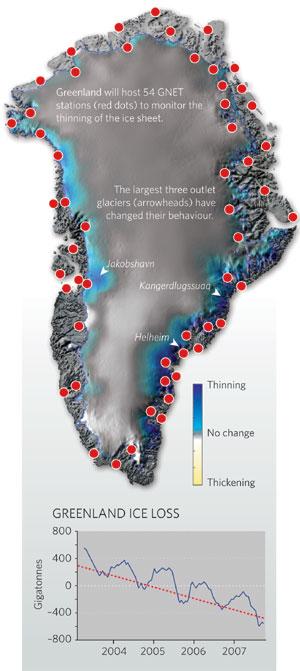Greenland, coming and going but defnitely on the rebound


Nature has a broad look at what we know and we might know about Greenland and its shrinking ice. Unlike many of the, "this past summer..." articles, this one goes back to the most recent ice age when Greenland was just going with the flow, or floe.
Natural, man-made, fast or slow there's an inexorable process now underway: the ice on Greenland is diminishing. There's some very interesting satellite data being used and computer models, and all the stuff that makes for endless argument over climate change in blogs and elsewhere.
Here's one paragraph: "Melting is already undoubtedly and dramatically underway. Glaciers are spitting icebergs into the ocean and scurrying back up their narrow fjords like rats up drainpipes. Giant lakes are forming on the frozen surface, sending torrents of water plunging through fissures in the ice sheet and thus, perhaps, accelerating its slipping and sliding seawards. Over the past four summers, Greenland has shed an average of between 380 billion tonnes and 490 billion tonnes of ice each year — on average 150 billion tonnes more than it gains in snow in winter."
As the ice goes away, the land mass beneath rises, or rebounds. And some of that melt water goes into making the oceans higher around the world. We know about rebound from Scandanavia and other formerly sub-glacial landmasses that are still rebounding from the last ice age's downward pressure.
One area Nature points to as still very unstudied: what are the effects of warmer ocean water on the glacial melt? Much is written about higher air temps, little is understood about the warmer ocean itself. And the article points out the last time we had a rapid warm-up of Greenland: the 1920s. And just now some researchers are looking to see what happened then.